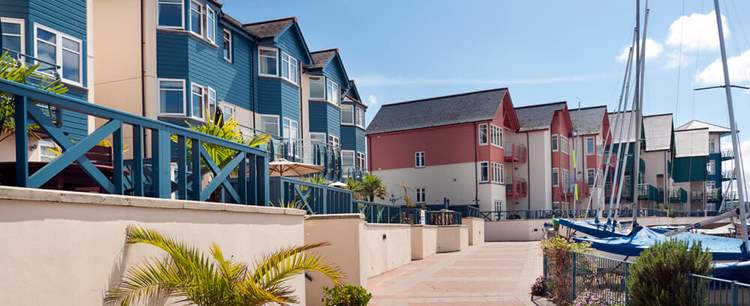Fluctuations in house prices, government initiatives to improve the energy performance of the homes we live in, and a top ten of the nation’s favourite places to live beside the seaside all make recent property news headlines. Let’s take a closer look.
House prices surge by £4,000 in a month
Average house prices in the UK saw a leap of more than £4,000 in August alone – the highest jump since October 2017 – and all against the background of continuing worries about the coronavirus epidemic, reported the Daily Mail last week.
With the year to September now registering an annual increase of 4.7%, the average price of a home in the UK has reached a record high of £244,513.
Detached properties are far and away the most popular, with the average price for these leaping by 6.2% (an average of £22,000) during the course of the year. F
lats and maisonettes rose by an average 2% to an average £211,443 – an annual increase of some £4,100.
Landlords have extra year for Green Homes Grant projects
Residential Property owners – including landlords – have been given a year’s period of extra grace in which to apply for a Green Homes Grant, revealed Landlord Today on the 19th of November.
The grant scheme was previously scheduled to last only until March 2021 but has now been extended to March 2022.
The scheme provides grants to cover up to two-thirds of the cost (up to a maximum £5,000) of carrying out prescribed low carbon heating and energy efficiency improvements to homes. Eligibility for the grants is reserved for so-called:
Primary improvements (of which there must be at least one) – examples of which include the installation of comprehensive insulation or setting up a low-carbon heating system through the use of a solar thermal device, a ground source heat pump, or an air source heat pump; and
Secondary improvements – such as the installation of secondary double-glazing, draught-proofing, and updating the heating control systems.
The extension to the scheme’s duration is thought to have been the government’s response to concerns about the relatively low number of installers who have secured accreditation for working under the scheme.
Any energy efficiency measures will be timely for landlords since the government has already indicated its intention to increase minimum energy efficiency standards in homes still further – a minimum “D” Energy Efficiency Rating by 2025 and a minimum “C” rating by 2030.
The top 10 coastal hotspots revealed
Many people have grown accustomed to working from home during the course of the pandemic. They may have found that they like it so much that they have every intention of continuing to do so in future. As a result, many former commuters are no longer held quite so hostage to the city-centre offices in which they once worked. A life in the altogether more peaceful and agreeable surroundings of a home on the coast has become very much on the cards.
So attractive has coastal living become that online listings site Rightmove has compiled a list of the top ten seaside locations currently stealing the attention of potential buyers – ranked according to the respective increases in average house prices over the past five years:
- Mumbles, South Wales – on the outskirts of industrial Swansea, but serving as the gateway to the beautiful Gower Peninsula, the quaint town of Mumbles has seen the average house price increase by 47% since 2015 (an increase of £110,537 in five years, bringing today’s average to £344,832);
- Camber, East Sussex – situated a little outside the ancient cinque port of Rye and with Dungeness just to the east, house prices in Camber have increased by an average 45% in five years (to a current £305,891);
- Fowey, Cornwall – it is a similar story in this quaint fishing port, where the average house price has increased by 45% to £487,531;
- Sandilands, Lincolnshire – with current prices at an average £268,257, house prices in this coastal town just to the north of Skegness have risen by 43% in the past five years;
- Margaret’s-at-Cliffe, Kent – situated between the ports of Dover and Deal, average house prices here have increased by 42% in the last five years to a current average of £362,982;
- Aberavon, Port Talbot, South Wales – between Port Talbot and Swansea, average house prices in Aberavon have also increased by 42% since 2015 – to today’s £136,710;
- Agnes, Cornwall – on the rugged north coast of Cornwall, average house prices in St Agnes have increased by 40% to a current £442,383;
- Greatstone, Kent – also seeing average house prices rise by an annual 40% were homes in Greatstone, Kent;
- Mundesley, Norfolk – along the coast from Cromer in Norfolk, the average price of a home in Mundesley has increased by 40% since 2015 to today’s £286,254; and
- Benllech, Anglesey, North Wales – popular among retirees and those seeking early retirement to a home on the coast, average house prices at Benllech have risen by 40% in the past five years and currently stand at £289,390.
We do love to be beside the seaside – and increasing numbers of us are seizing the opportunity to do just that.







